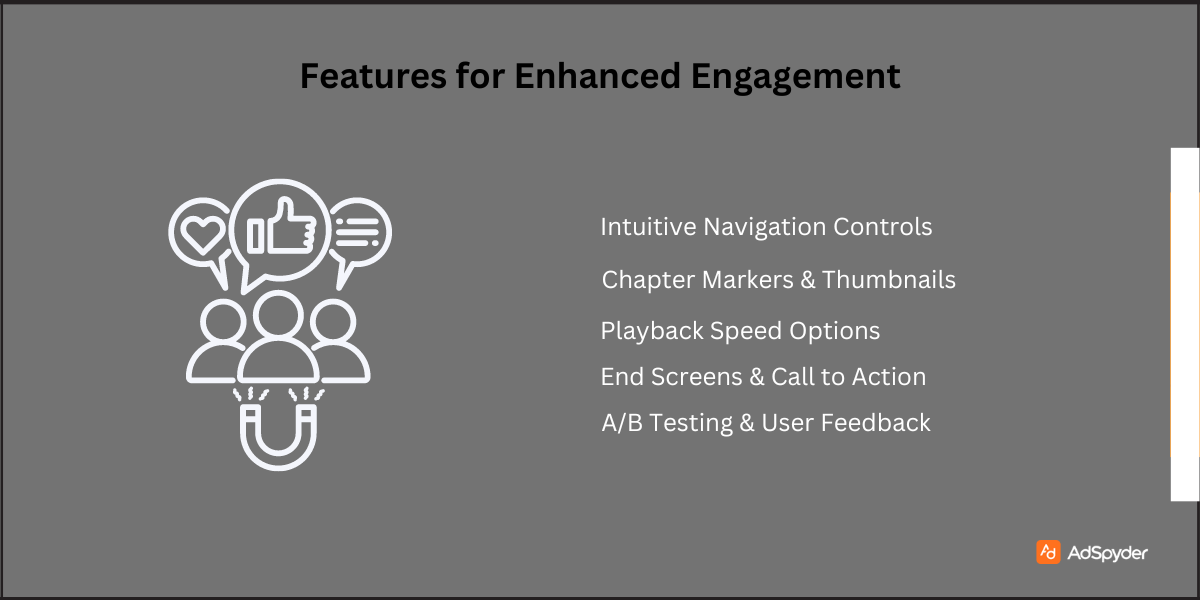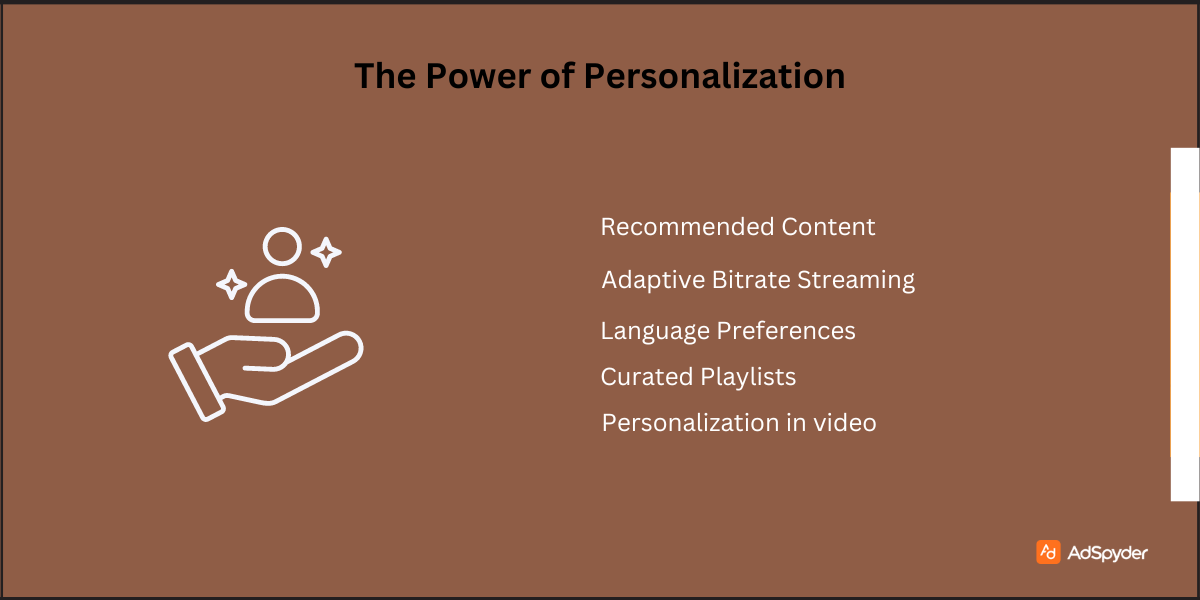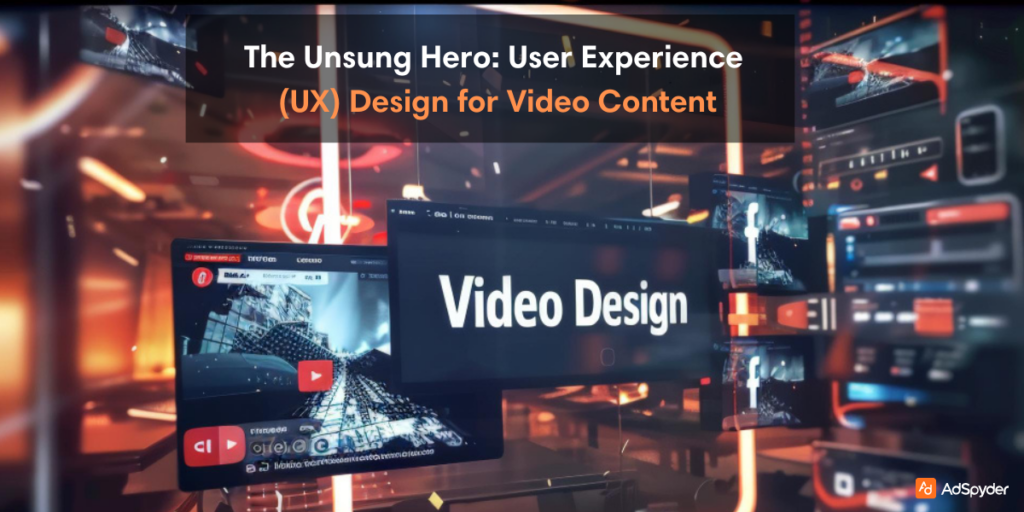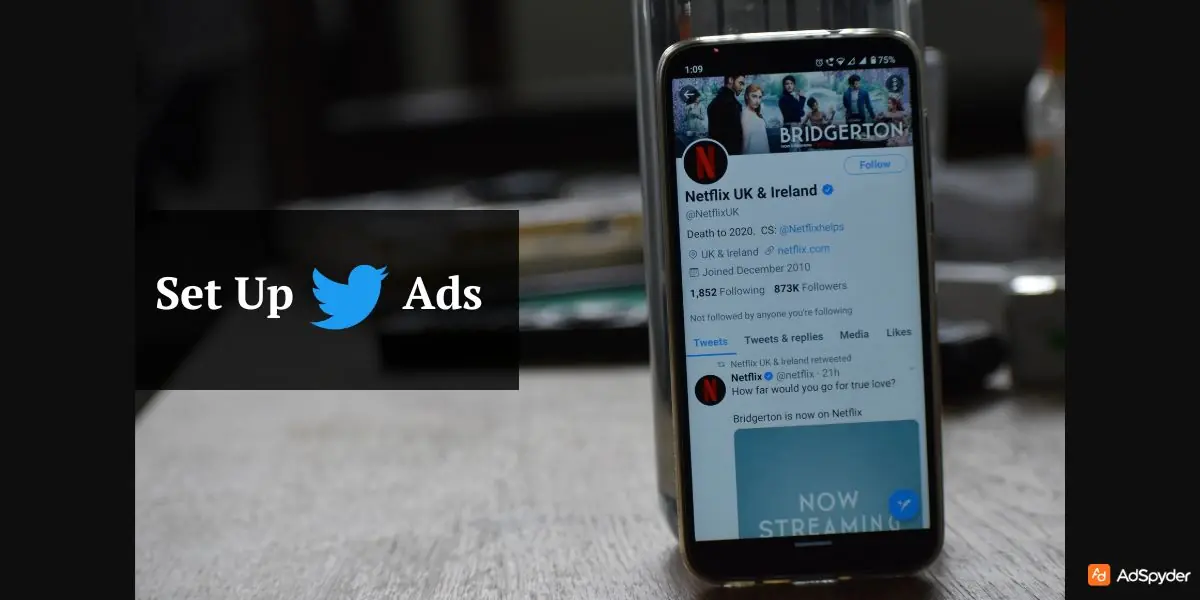The current trend is one where nothing reigns above videos. From tiny social media clips to in-depth documentaries, video content holds complete supremacy. From all sorts of marketing strategies to study videos, everything is achievable with the help of videos. However, in this daily arrangement, the focus tends to lie on the content itself, often neglecting one crucial element – User Experience (UX) Design. Just like in any other digital product, a well-designed video interface along with good functionalities are a must to significantly enhance the viewing experience. With this thorough guide, get ready to be driven through the world of UX design for video content.
Ready to Elevate your Marketing Strategy?
We’ll be exploring some exciting topics like the importance of UX in video, unpack some key principles for designing user-friendly video interfaces, delve into features that elevate the viewing experience, and even showcase some of the best practices for optimizing video players across different platforms. By the end of this journey, you’re going to be so equipped to create video experiences that you won’t be able to wait until you can finally use your newfound knowledge of UX. It will not only captivate your viewers with compelling content but also keep them thoroughly engaged through intuitive and user-friendly design.
Summary
Before we look right into the core of our topic, let’s step back and quickly peek at all the topics that we will be covering in this blog :
- Introduction: We’re highlighting the growing dominance of video content and the often-overlooked aspect of UX design in video experiences.
- Why does UX Matter for Video? We’ll be exploring the significant impact that UX design has on viewer engagement, satisfaction, and brand perception.
- Core Principles of Video UX Design: We’ll unpack all the essential principles like user-centered design, accessibility, clarity, and consistency to guide the creation of user-friendly video interfaces.
- Designing for Different Devices: Adapting video UX design considerations for various viewing platforms like desktops, mobile devices, and smart TVs.
- Features for Enhanced Engagement: Showcasing functionalities that elevate the viewing experience, including intuitive navigation controls, progress bars, playback speed options, captions & subtitles, and interactive elements.
- Optimizing Video Players: We’ll be exploring some of the best practices for optimizing video player design across different platforms to ensure seamless playback and user satisfaction.
- The Power of Personalization: Discussing the potential of personalization in video UX design to cater to individual viewer preferences and enhance engagement.
- The Future of Video UX: Exploring emerging trends in video UX design, such as voice controls, interactive overlays, and integration with artificial intelligence (AI).
- FAQs: Finally, we will be addressing eight of your most frequently asked questions regarding UX design for video content.
- Conclusion: Before we conclude, we will quickly recap, emphasizing the transformative potential of UX design for video content. Final thoughts on the evolving landscape of video consumption and the continuous need for user-centric design approaches. Call to action – encouraging readers to prioritize UX design in their video content creation process.
Why UX Matters for Video?

While captivating content is of utmost importance, sometimes, even the most engaging video can fail because of a poorly designed user experience. Here are a few reasons why UX design plays a critical role in the success of your video content:
- Engagement & Satisfaction: Intuitive video interfaces with clear navigation, easy-to-use controls, and seamless playback keep viewers engaged and satisfied. A frustrating UX often leads to viewers abandoning the entire video altogether.
- Accessibility for All: Well-designed video interfaces prioritize accessibility, incorporating features like captions, subtitles, and adjustable playback speeds to cater to viewers with diverse needs and preferences.
- Brand Perception: A user-friendly video experience reflects positively on your brand, conveying professionalism, attention to detail, and a commitment to user satisfaction. A clunky UX can often damage brand perception and leave a negative lasting impression.
- Measurable Impact: Metrics like watch time, completion rates, and user interaction can be directly influenced by UX design. A well-designed video experience fosters longer viewing times, higher completion rates, and increased user engagement with your content.
By prioritizing UX design in video content, you can create a highly positive and engaging viewing experience that’ll keep your viewers hooked, reinforce your brand image, and ultimately drive desired outcomes, whether it’s brand awareness, website traffic generation, or lead conversion.
Core Principles of UX Design For Video Content
While you craft a user-friendly video interface, here are some essential principles to keep in mind:
- User-Centered Design: This core principle emphasizes understanding your target audience and their needs. Conduct user research to identify viewing habits, preferred functionalities, and potential pain points. Design the video interface with the user in mind, ensuring it caters to their expectations and facilitates a smooth viewing experience.
- Accessibility: Prioritize inclusivity by incorporating features that make your video content accessible to a wider audience. You need not make a very fancy video with a lot of resources. You can create affordable videos, with a good UX design for a professional look.
Tips to Create UX Design for Video Content
- Captions & Subtitles: Offer captions and subtitles in multiple languages to cater to viewers with hearing impairments or those who prefer watching videos with the sound off.
- Adjustable Playback Speed: Allow viewers to adjust the playback speed (slower or faster) to suit their preferences and comprehension needs.
- Keyboard Navigation: Ensure all video controls can be accessed and operated using a keyboard for viewers who rely on assistive technologies.
- Color Contrast: Maintain sufficient color contrast between text and background elements to enhance readability for viewers with visual impairments.
- Clarity & Consistency: The video interface should be clear and visually intuitive. Use familiar icons and design conventions that viewers readily understand. Maintain consistency in design elements (e.g., color scheme, font styles, button placement) throughout the video player for a seamless user experience.
- Minimalism & Focus: Avoid cluttering the video interface with unnecessary elements. Prioritize essential controls like play/pause, volume adjustment, and progress bar. Keep the focus on the video content itself and ensure the interface doesn’t distract viewers or obstruct their viewing experience.
- Responsiveness & Optimization: With the proliferation of viewing devices, ensure your video player is responsive and optimizes playback across desktops, mobile devices, and smart TVs. Adjust layout elements and control sizes to accommodate different screen sizes and viewing orientations (portrait vs. landscape) for a seamless user experience on any device.
Features for Enhanced Engagement

Once you are thorough with the core UX principles, you can move on to something more advanced.
Intuitive Navigation Controls
- The presence of large, clear, and easily identifiable play/pause options, volume control options, and progress bars is essential. You can consider adding options for skipping forward or backward in increments (e.g., 10 seconds, 30 seconds) to allow viewers to navigate the video content with ease.
Chapter Markers & Thumbnails
- If your videos are longer, it is convenient to break down your content into chapters with descriptive titles and corresponding thumbnail previews. This will allow the viewers to easily jump to specific sections of the video that interest them most and avoid skipping videos altogether because of the longer duration.
Playback Speed Options
- As mentioned earlier, offering adjustable playback speed caters to diverse viewing preferences. While some viewers might prefer a slower pace for better comprehension, others might opt for a faster playback to skim through the content.
Captions & Subtitles with Styling Options
- While captions and subtitles are crucial for accessibility, consider offering styling options like font size, color, and background opacity to enhance readability and cater to individual preferences.
Interactive Overlays
- In the case of educational or product demonstration videos, you can consider adding some interactive overlays that provide additional information or highlight specific elements within the video frame. Clicking on these overlays can even reveal text pop-ups, product links, or related content.
End Screens & Call to Action (CTA)
- Always utilize your end screens to keep your viewers engaged even after the video concludes. Offer suggestions for related content, promote your channel, or include a clear call to action (CTA) prompting viewers to subscribe, visit your website, or take a specific action.
Social Sharing Options
- Make it easy for viewers to share your video content on social media platforms by incorporating readily accessible share buttons. This will significantly expand your reach and attract new viewers to your content.
A/B Testing & User Feedback
- Don’t be afraid to experiment! Utilize A/B testing to compare different video interface designs and functionalities to see what resonates best with your audience. Additionally, actively seek feedback from your users and viewers through modes like surveys or comments, just to gain valuable insights and even make your audience feel involved in how you can further improve the UX of your video content.
Incorporating these features into your strategy, you can completely transform the viewing experience for your videos from passive viewing to an interactive and engaging journey for your audience. In this next section, we will delve into ways to optimize video players for different platforms to ensure seamless playback and a positive user experience across all devices.
Optimizing Video Players for Different Platforms
These days, we’ve got
viewers consume video content from all sorts of devices including desktops, laptops, tablets, smartphones, and smart TVs. To ensure a consistent and positive user experience, you must optimize your video player design for every
Desktops & Laptops
These devices typically offer much larger screen sizes in comparison to smartphones, allowing for more flexibility in video player design. You can incorporate a wider range of controls, navigation features, and interactive elements without compromising usability. Prioritize clear and legible text for captions and ensure all controls are easily accessible with a mouse or keyboard.
Mobile Devices
With smaller screens and touch-based interfaces, mobile video player design requires a focus on minimalism and intuitive touch interactions. Large, easily identifiable buttons are essential for play/pause, volume control, and full-screen mode options. Consider offering collapsible menus to house additional functionalities like captions, playback speed, and settings to avoid cluttering the main viewing area. Optimize video playback for both portrait and landscape viewing modes to ensure a smooth experience regardless of how viewers hold their devices.
Smart TVs
Smart TVs offer a lean-back viewing experience where users navigate using remote controls. Design the video player with large, easy-to-target buttons suitable for remote control interaction. Prioritize clear visual cues for navigation and playback controls. Explore platform-specific features like voice controls or integration with smart TV assistants for a more interactive experience.
Here are some additional tips for optimizing video players across platforms:
- Responsive Design: Utilize responsive design principles to ensure the video player layout automatically adjusts to different screen sizes and viewing environments.
- Fast Loading Times: Prioritize fast loading times to minimize buffering and ensure smooth video playback.
- Cross-Browser Compatibility: Test your video player functionality across different web browsers to ensure consistent performance and user experience.
- Accessibility Compliance: Maintain accessibility standards across platforms by offering captions, subtitles, and adjustable playback options regardless of the device being used.
By carefully considering some platform-specific design requirements and implementing these optimization techniques, you can guarantee a seamless and user-friendly video experience for your audience across all devices. This will not only enhance your viewer satisfaction but also broaden your reach and gain more customers from ads. This next section explores the exciting potential of personalization in video UX design.
The Power of Personalization

Personalization is rapidly transforming the digital landscape, and video UX design is no exception. By leveraging user data and viewing habits, you can tailor the video experience to individual preferences, leading to higher engagement and a more satisfying viewing journey. Here’s how personalization can be applied to video UX design:
Recommended Content
- Based on a viewer’s watch history and interests, suggest related videos or playlists at the end of a video or within the platform itself. This keeps viewers engaged and encourages them to explore more of your content library.
Adaptive Bitrate Streaming
- This technology automatically adjusts the video quality based on the viewer’s internet connection speed. This ensures smooth playback and avoids buffering issues, especially for viewers with limited bandwidth.
Language Preferences
- Automatically detect the viewer’s preferred language and display captions or subtitles accordingly. This eliminates the need for viewers to manually select language options, enhancing the viewing experience for a global audience.
Interactive Overlays with Personalization
- In educational or product demonstration videos, consider incorporating interactive overlays that adapt based on user data. For example, an e-commerce platform might showcase product recommendations within overlays based on the viewer’s previous browsing history or purchase behavior.
Curated Playlists
- Create personalized playlists based on user preferences. This allows viewers to easily access a collection of videos tailored to their specific interests, saving them time and effort in searching for relevant content.
A/B Testing Personalized Elements
- Don’t be afraid to experiment with different personalization strategies. Utilize A/B testing to compare the effectiveness of various recommendation algorithms or content curation methods to see what resonates best with your audience and drives the highest engagement.
Personalization in video UX design goes beyond simply suggesting related content. By leveraging data and viewer insights, you can create a truly customized video experience that caters to individual preferences and keeps viewers engaged for longer. This not only enhances user satisfaction but also fosters brand loyalty and encourages repeat viewership.
The Future of UX Design For Video Content
The universe of video UX design is constantly evolving, with new technologies and user expectations shaping the way viewers interact with video content. Let’s take a glimpse at some exciting trends that will likely transform video UX design in the years to come:
Voice Controls
With the rise of voice-enabled devices, expect video players to integrate seamlessly with voice assistants.
- Imagine viewers using voice commands to search for specific content, control playback (play, pause, rewind, fast-forward), or adjust volume.
- This hands-free interaction will further enhance the user experience and cater to viewers who prefer a more natural and intuitive way to navigate video content.
Interactive Overlays & Augmented Reality (AR)
Interactive overlays will become even more sophisticated, incorporating elements of augmented reality (AR).
- Imagine product demonstration videos where viewers can virtually place a product in their own environment to see how it looks or interact with 3D models for a more immersive learning experience.
- This technology has the potential to revolutionize video UX design, blurring the lines between passive viewing and active engagement.
Artificial Intelligence (AI)
Artificial intelligence (AI) will play a significant role in personalizing video UX design.
- AI algorithms can analyze user behavior, viewing habits, and preferences to curate personalized playlists.
- They can recommend relevant content, and even dynamically adjust video playback speeds.
- Players generate captions in real time based on the viewer’s language.
- This level of personalization will create a truly customized video experience for each viewer.
- With the rise of cookieless advertising, AI will play a great role in providing insights into how videos are viewed in the ads and provide suggestions to improve UX design.
360° & Virtual Reality (VR) Video
- 360° video and virtual reality (VR) hold immense potential for video UX design.
- Imagine viewers being transported to different locations or experiencing events firsthand. This is possible through immersive VR video experiences.
- The UX design for these formats will need to be carefully considered. This is to ensure a seamless and comfortable viewing experience for users.
Haptic Feedback
Haptic feedback technology provides users with physical sensations in response to on-screen actions.
- This could be integrated into video UX design.
- We can create a more immersive and interactive viewing experience.
- This is particularly true for VR content or educational simulations.
These are just a few of the exciting trends that promise to revolutionize video UX design in the future. Stay informed about these advancements and integrating them strategically. With this, you can ensure your video content remains at the forefront of user experience. You can continue to captivate viewers in ever-evolving ways.
FAQs
For short social media clips, a basic user-friendly interface might suffice. For longer videos or demonstrations, a well-designed and interactive video player can enhance audience engagement.
Several online tools and software cater to video player design and customization. Explore options like JW Player, Flowplayer, and Vplayed to find a solution that suits your budget and needs.
Maintain a clear and readable font style and size for captions and subtitles. Ensure high color contrast between text and background elements. Consider multiple language options for subtitles.
Offer captions and subtitles as standard practice. Ensure keyboard navigation is available for all video player controls. Consider adding audio descriptions for complex visuals.
Utilize clickable overlays, polls, or quizzes within your videos. Run contests or giveaways that require viewers to like, share, or comment on your video to boost interaction.
Industry blogs, online courses, and video marketing tutorials can help you create user-friendly and engaging video experiences. Explore platforms like Nielsen Norman Group (NN/g), UX Booth, and The Future for articles and case studies on video UX design
Measure metrics such as Watch Time, Completion Rate, User Interaction, Click-Through Rate (CTR).
Conclusion
Recap
In this thorough guide, we dove into the world of UX design for video content. We explored the significance of UX in video, unpacked core principles for designing user-friendly interfaces, and showcased features that elevate the viewing experience. We also emphasized the importance of optimizing video players across different platforms and discussed the potential of personalization in video UX design. Finally, we took a peek into the future, exploring all the emerging trends that will likely shape the way viewers interact with video content in the years to come.
Final Thoughts
The video landscape is constantly evolving, and user expectations are ever-changing. Prioritise UX design in your video content creation process. You can ensure your videos capture attention with compelling content. It also retains viewers with an intuitive and engaging user experience. Remember, a well-designed UX can significantly impact brand perception, viewer satisfaction, and ultimately, the success of your video marketing efforts.
Call to Action
Ready to transform your health and wellness brand’s video marketing efforts? Incorporate the valuable insights on UX design for video content explored in this guide. You can create engaging and user-friendly video experiences that educate, inspire, and empower your target audience.




